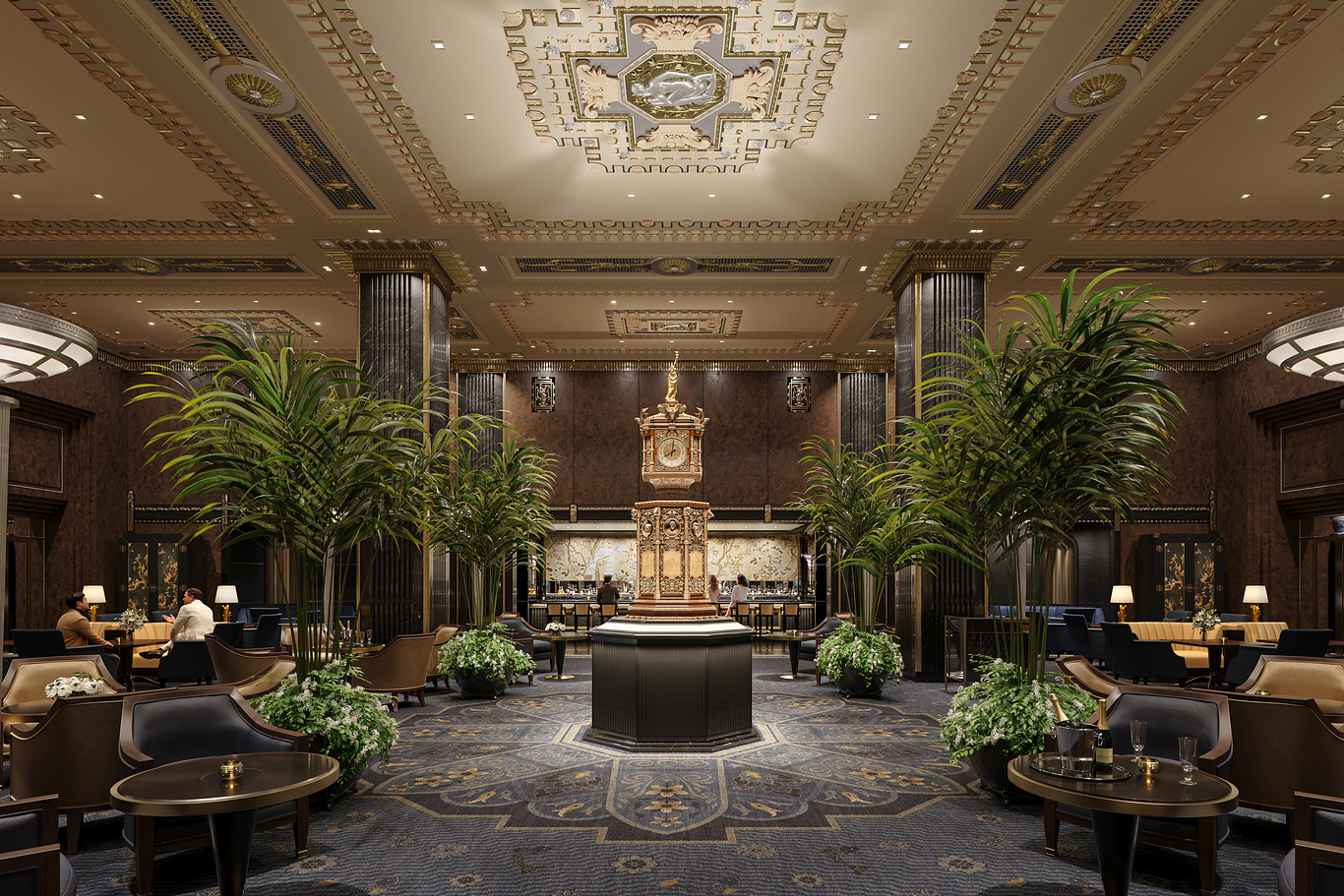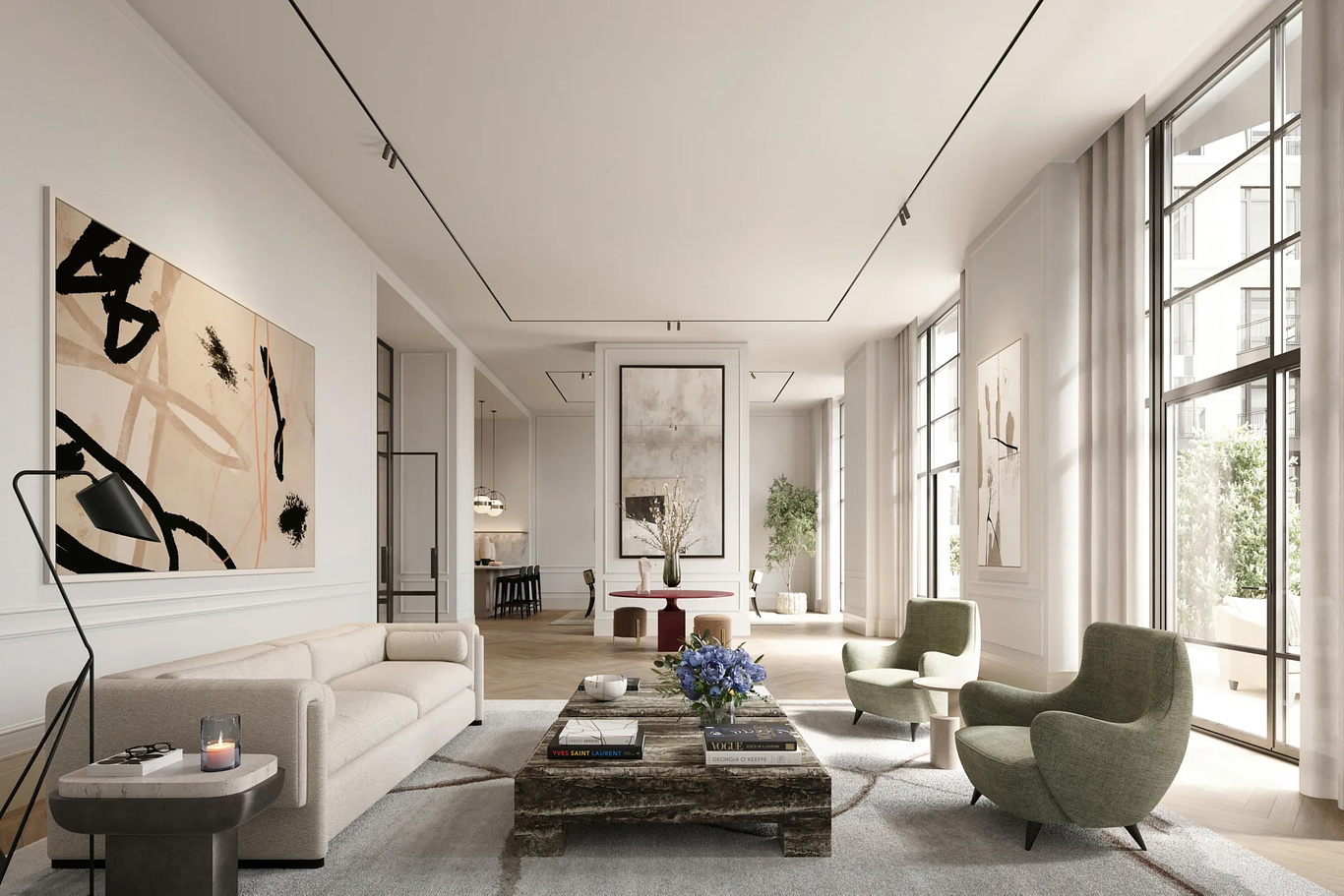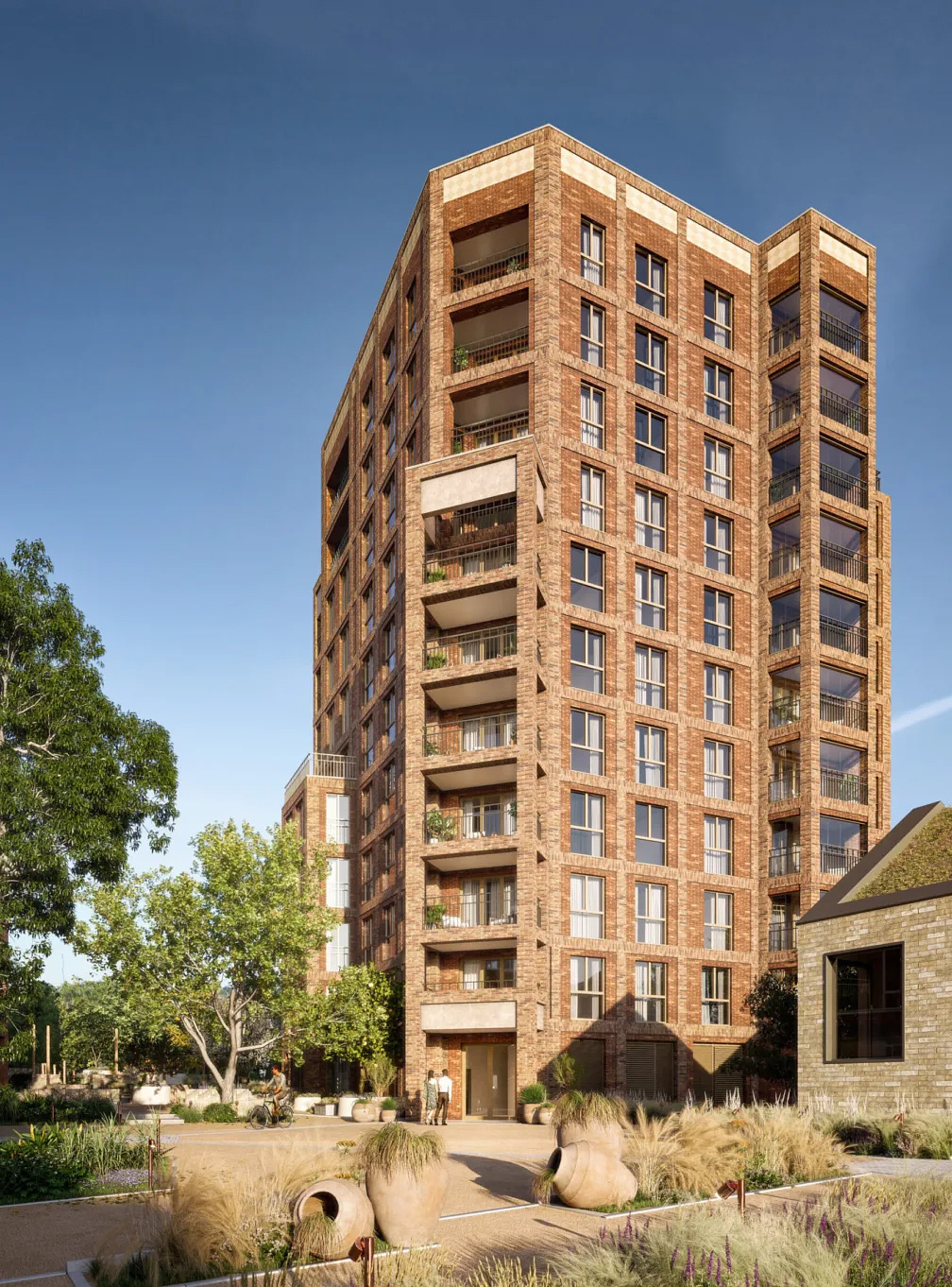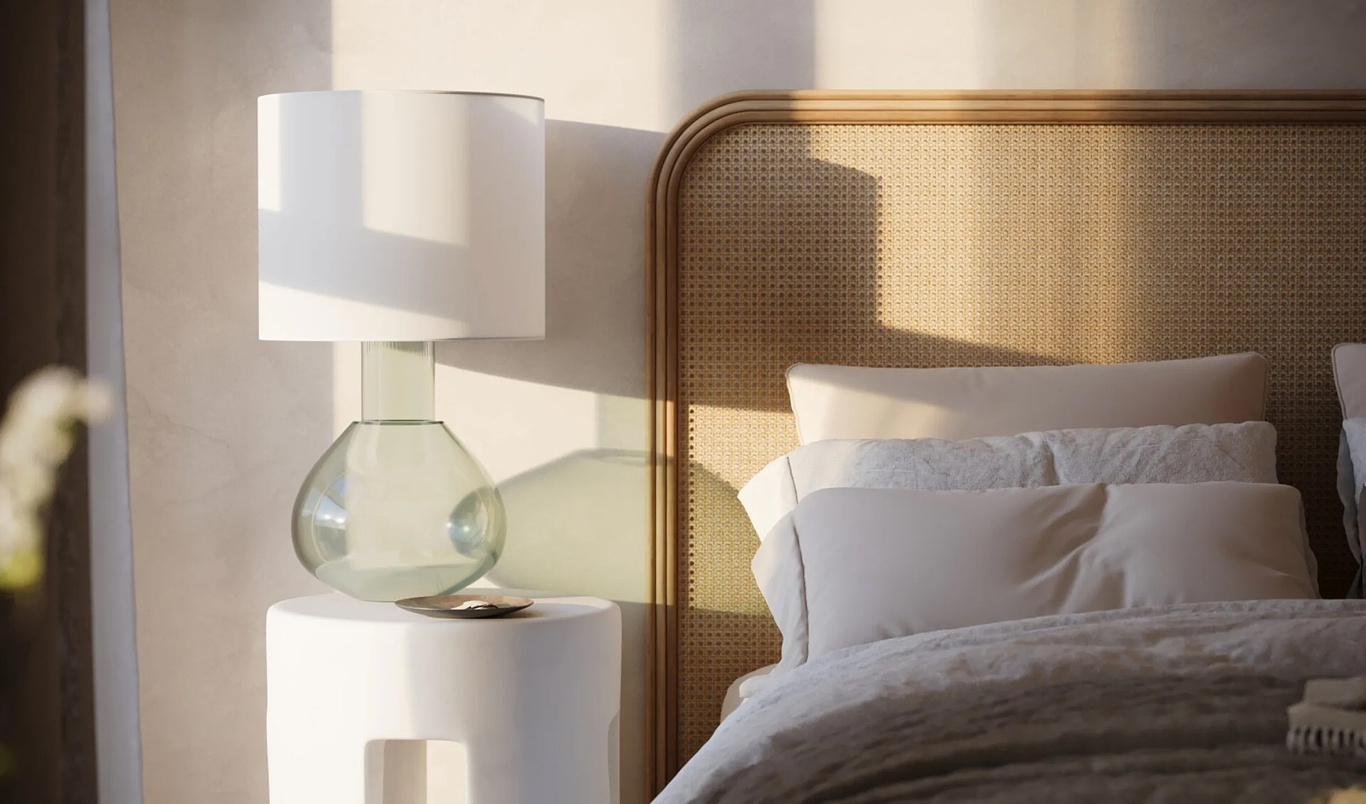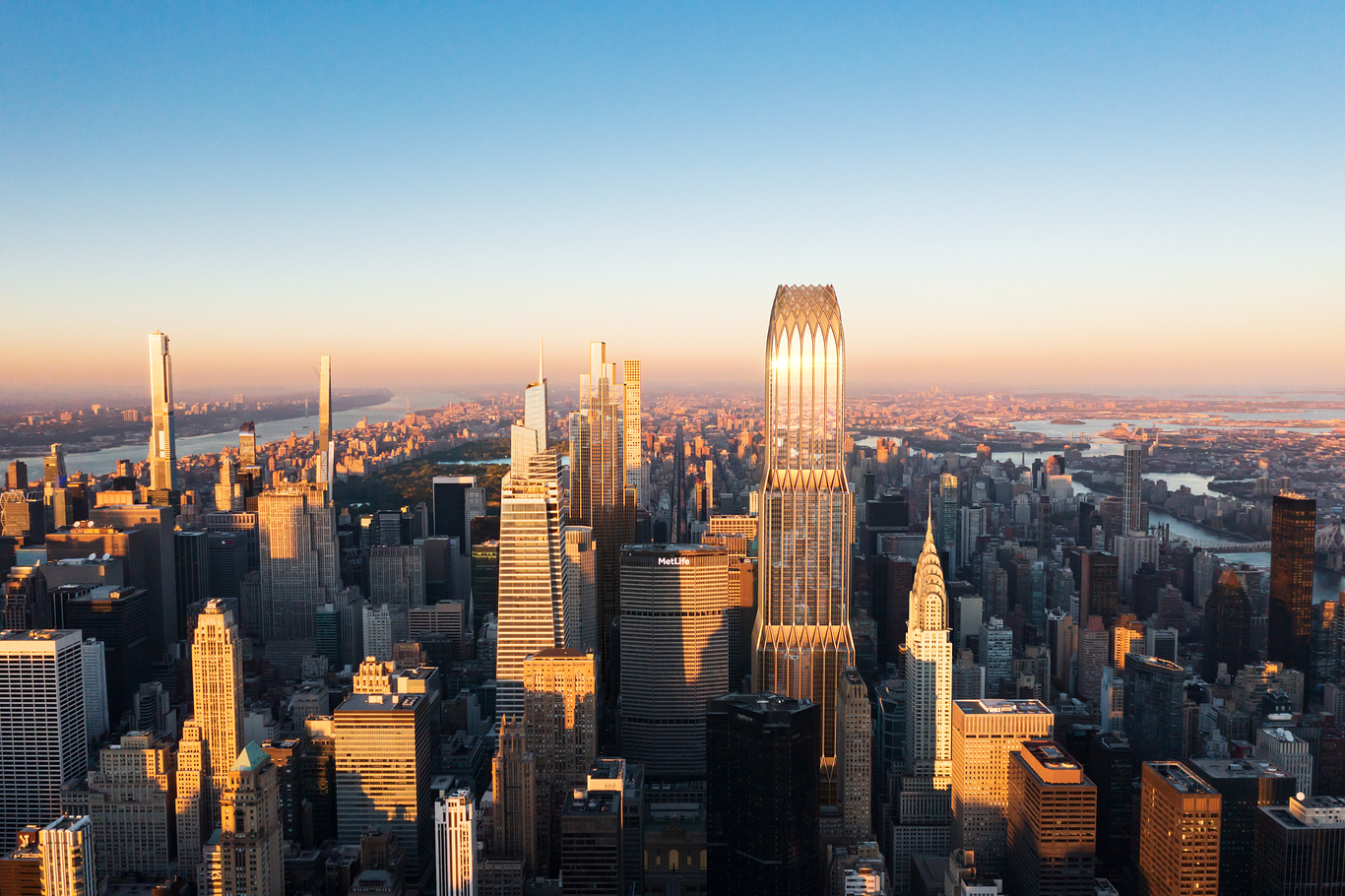
10 Questions With...
10 Questions with The Boundary
In our "10 Questions with..." series, where we explore the minds and creations of leading figures in the architectural visualization industry, we feature The Boundary, a studio known for its exceptional ability to blend the realms of reality and imagination. Founded by Henry Goss and Peter Guthrie, The Boundary has made a significant mark on the industry, redefining what's achievable in architectural visualization. The story of its inception is as unique as its approach, born from a mix of geographical happenstance and a shared passion for pushing the boundaries of architecture and visualization.
This conversation with Henry Goss provides a glimpse into the studio's journey, emphasizing their commitment to excellence and innovation. From the very beginning, Goss and Guthrie aimed high, seeking to establish The Boundary as the premier architectural visualization firm. Through this interview, we explore the principles that guide their creative process, the role of technology in their work, and how they stay ahead in a rapidly evolving field.
As part of our "10 Questions with..." series, we delve into the studio's past, present, and future, offering insights into the challenges they face and the breakthroughs they've achieved. Join us as we discover the magic behind The Boundary's creations and their vision for the future of architectural visualization.
This conversation with Henry Goss provides a glimpse into the studio's journey, emphasizing their commitment to excellence and innovation. From the very beginning, Goss and Guthrie aimed high, seeking to establish The Boundary as the premier architectural visualization firm. Through this interview, we explore the principles that guide their creative process, the role of technology in their work, and how they stay ahead in a rapidly evolving field.
As part of our "10 Questions with..." series, we delve into the studio's past, present, and future, offering insights into the challenges they face and the breakthroughs they've achieved. Join us as we discover the magic behind The Boundary's creations and their vision for the future of architectural visualization.
1. What inspired the name "The Boundary" for your studio?
Long or short answer? People tend to associate it with ‘blurring the boundary between the imagined and the real’ which is indeed a strapline we have used extensively. The name originally arose organically on account of the geographic location of our first office. Peter and I shared an office in Kentish Town (KT) prior to founding The Boundary. At some point we started referring to the office as The KT Boundary after the Cretaceous–Tertiary Boundary (K–T Boundary) associated with the extinction event of the majority of the world's Mesozoic species. This slightly obscure (and not particularly amusing) geological joke became abbreviated to The Boundary when referring to the office and thus when thinking of a name for our new company we concluded that we had already established one inadvertently.
2. How did the studio get its start, and what was the vision behind its inception?
2. How did the studio get its start, and what was the vision behind its inception?
Peter and I met through a friend called Magnus Strom of Strom Architects with whom I used to work at John Pardey Architects and for whom Peter worked on a rendering project for the practice’s first significant residential commission. Peter and I had both trained and worked as Architects for several years prior to turning our attention full time to visualisation. We bonded over shared experiences of the profession and found that we had drawn very similar conclusions about what we liked and didn’t like about the direction and culture of the industry.
At the inception of The Boundary our only vision was to create the best architectural visualisation company in the world. In many respects that is still the underlying thread which remains our guiding principle in all the increasingly diverse and interesting ways that this manifests itself.
3. How do you approach blending reality and imagination in your visualizations?
3. How do you approach blending reality and imagination in your visualizations?
Being Architects ourselves we have always had an interest in architectural photography and the faithful recreation of the subject matter in a computer generated world which certainly formed the basis of our approach. The great thing about the industry and the technology employed over the past decade or so is the broadening of creative possibilities and the ever increasing market hungry to employ the latest technical and creative thinking. As a creative studio, this ever changing technological landscape is what excites us most as it provides the opportunity for us not only to exploit the new technology in new creative ways but also critically to be involved in developing the technology for our specific requirements, creating a true symbiosis between the technology and creativity.
4. What are the key challenges in architectural visualization today?
With any rapidly evolving, relatively young industry there are many challenges but also many opportunities. It’s certainly true to say that what we are doing now is vastly different to what we were doing ten years ago. The only way to stay out ahead is to embrace change, not resist it. For some in the industry there is a slightly more conservative attitude of sticking to tried and tested working methodologies particularly for those companies which have grown and have the pressure of requiring more certainly. This approach in any rapidly evolving industry is destined to result in stagnation and irrelevance. Remaining nimble and adaptable whilst scaling is definitely one of the key aspects of The Boundary’s continuing success born out of our interest in and commitment to what we are doing at a fundamental level. Leading the charge has always been our raison d'etre and is an ingrained part of our cultural DNA which the entire team perpetuate every day.
5. Can you walk us through your creative process for a typical project?
5. Can you walk us through your creative process for a typical project?
Every project is different and every client and creative team bring different things to the table. Whilst creative adaptability remains a cornerstone of our approach, there is of course a level of rigour underpinning our processes which is based on over two decades of experience in the industry. Typically we aim to get involved in the project as early as possible not only to be fully engaged and cognisant of the design team’s intentions and ambitions for the project but also in order to contribute to the overall direction as a creative consultant from the outset as opposed to the more traditional workflow of simply visualising a finalised design.
6. How has technology changed the landscape of architectural visualization?
6. How has technology changed the landscape of architectural visualization?
In an increasingly competitive environment within a rapidly expanding industry, having a technological edge is increasingly important. We have historically been very open with our working methodologies and knowledge sharing and in the round this remains important to us from a creative perspective. Where things have changed somewhat in the past five years or so is the importance of proprietary software particularly in the real-time rendering space developed in-house to maintain a creative and competitive advantage. In some ways this is nothing new. We have always aimed to lead the way and subvert the status quo but the gravity of this initiative is rather swinging to tech enabled services in our business and not purely creative excellence.
7. Could you share insights on a particularly challenging or unique project?
7. Could you share insights on a particularly challenging or unique project?
The larger and higher profile the project, typically the more challenging for obvious reasons. 175 Park Avenue is an incredibly important project for New York City. Proposed as one of the tallest buildings in Manhattan, the world’s eyes are on it and thus everyone involved is always hyper aware of any content which is released representing the development. The redevelopment of the Waldorf Astoria Hotel was another high profile project which required similar attention to detail. This presented different challenges on account of the historic nature of the building and the requirement for precise and accurate representation of the existing building fabric. 3d scanning and incredibly precise texturing were challenging from an artistic perspective whilst navigating the shifting political sands of ownership and stakeholder agendas made for an interesting time for the PM team. In both cases the results were incredible so the challenges were clearly overcome.
8. What are the future trends you foresee in this industry?
When we started in the industry over 20 years ago, the quest for photorealism was the holy grail. This then became criticised for being ‘too real’ and lacking the evocative essence of the architectural proposal which the more traditional, more ambiguous architectural illustrations had captured with greater success. Atmosphere and depth then became the preoccupations of the fledgling industry exemplified by some of Peter’s work pre-boundary with Allandale and Farnsworth House. The application of this approach for animated content and VR tours was the next step.
Currently immersive content is by far the biggest growth area for us. Increasingly we are treating this entire real-time world of immersive digital experiences as an integrated singular form. A more sophisticated and more tailored version of the Metaverse in a way but highly targeted and highly personalised.
Sophistication is the key. All sectors seem to have increasingly sophisticated sensibilities in the digital space. No one is simply impressed with technology anymore. It’s an expectation that it will work and look real. It’s all about the user experience and how that experience makes the end user feel and consequently act.
AI is the other major buzz topic at the moment of course which we have been using to an extent for a while. In the past year it has exploded and already many basic techniques are becoming commonplace across the industry. If harnessed correctly, as we are increasingly doing, this presents a potentially very exciting paradigm shift. There will no doubt be many casualties as is always the case when various change resistant members of the community fail to act or react but we already see exciting new workflows appearing across all our production processes which is one of the things we love about the industry; constant evolution.
9. How do you ensure client satisfaction and manage expectations in such a detail-oriented field?
9. How do you ensure client satisfaction and manage expectations in such a detail-oriented field?
Quality, communication and a sophisticated creative interpretation of the brief. To all the architects in this industry, of which there are many, this will come as no revelation as it is this professionalism and rigour which is drilled into you from day one. Remaining nimble as previously mentioned is also a key attribute which we have fought hard to maintain during rapid growth. Creativity always requires a certain amount of nimbleness which can very easily be lost at scale.
10. Lastly, where do you see "The Boundary" in the next 5 years, and what are your goals for the studio's future?
10. Lastly, where do you see "The Boundary" in the next 5 years, and what are your goals for the studio's future?
Onwards and upwards I would say. As long as we can maintain the energy and focus to drive the technology and the creative output and all enjoy working as a team, there’s no limit to what we can achieve. We already have offices in London, New York and Auckland with a few other satellite European offices due to expand in the near future. It’s a great privilege and a subject of continued amazement that we have been able to foster something which so many talented people have become part of and believe so passionately in. The Boundary truly now has a life of its own.
You must be logged in to post a comment. Login here.
About this article
In this installment of our "10 Questions with..." series, we spotlight The Boundary, a studio at the forefront of architectural visualization. Founded by Henry Goss and Peter Guthrie, The Boundary has established itself as a leader in blending innovative design with cutting-edge technology.
visibility582
favorite_border1
mode_comment0


